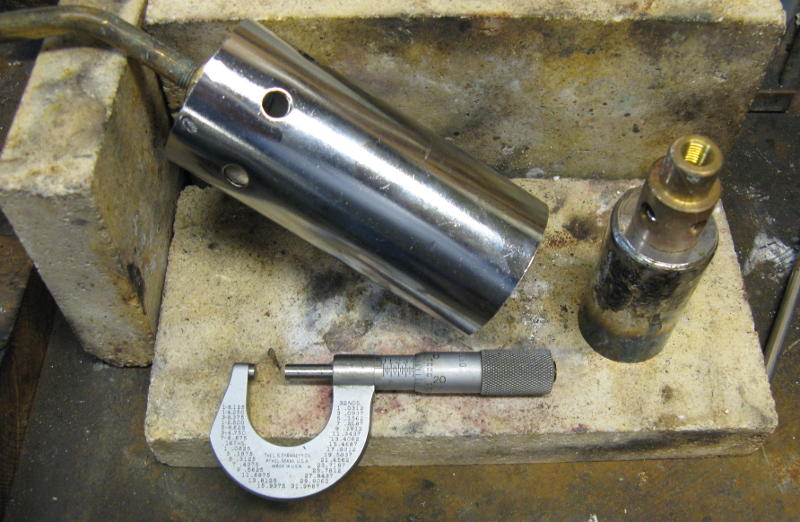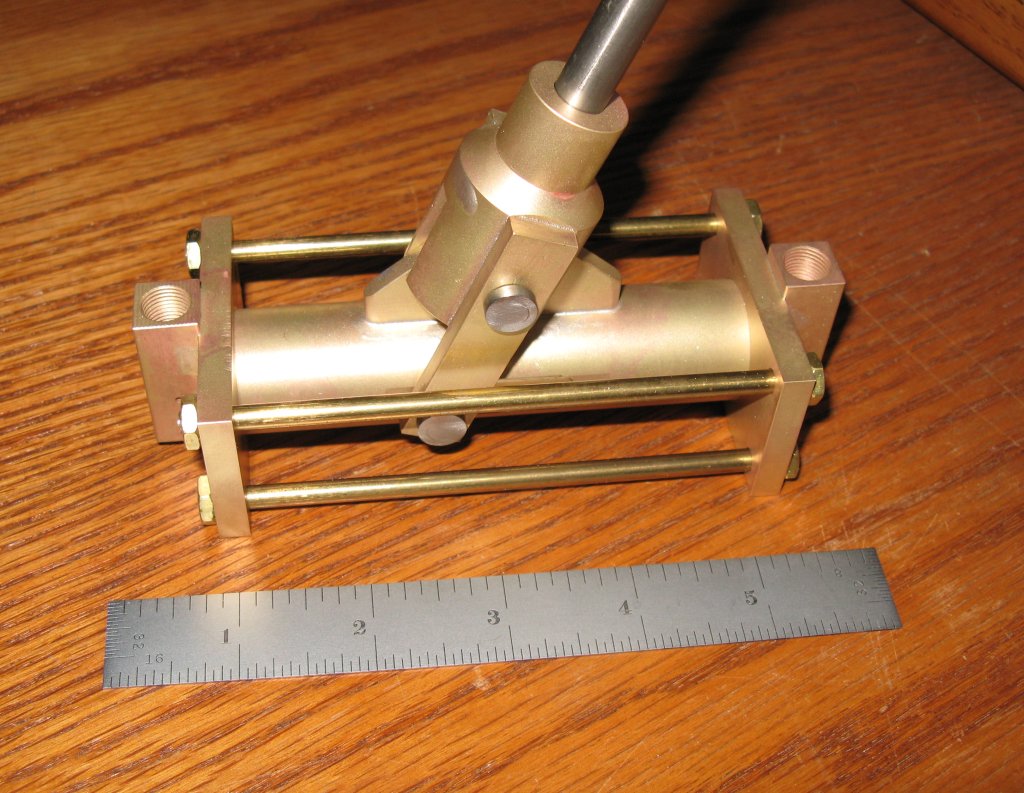Goldstar,
I'll gladly forgive any repetition, if you'll allow me to fill in a few details . . .

Acid Pickle: I like sulphuric acid pickle too. Cheap, easy to find (any automotive battery shop) and effective. Minor downside is disposal once it is played out. Do not use full strength from the chemist (or battery shop), it needs to be diluted IN water (NOT "with water"!!! The distinction is very important!). "Water" contains impurities, which in reacting with the concentrated acid, releases heat energy. The last thing you want is a violent reaction in a mass of concentrated acid, erupting all over you and your surroundings! Add the acid to the water SLOWLY, and any reaction disperses through the water. If it starts to boil, STOP adding, and the reaction will stop too. Probably obvious that you want to stir while adding . . .
How much to add? To think as a chemist, you will know the concentration of the acid you are adding, and have calculated your dilution ratio based on the final concentration desired. Knowing the final volume of dilute solution you intend to produce, it would be a simple matter to calculate the volumes of each component required. This would be the most correct and logical way to proceed.
I am not a chemist, I'm a shop rat. I want my pickle to produce a nice "salmon pink" surface on my copper parts in less than 20 minutes soak at room temperature (even less from hot), and I still want time to get my jeans off before my skin starts to bubble if I get splashed. (If that happens, have a COLD shower immediately, wash with baking soda to neutralize the acid, soap to get rid of the salty residue, and seek medical attention if blisters pop out.) Using commercial battery acid, I started with 10 parts water/1 part acid. Add acid to the bath until you are happy with the results. As the acid is depleted by reaction with the parts going through the bath, it will need to be replenished. If you don't the reaction will slow down . . .
The acid bath needs to be kept in a container that it won't react with . . . this, too should be obvious. I use a plastic bucket, but this is not ideal. If I drop a hot component, it may melt a hole in the bucket. Goldstar's porcelain sink with lead stoppers solves that problem, but is hard to seal for long-term storage. A steel bucket is likely to rot through in a month . . . with poisoned pickle all over the floor. LBSC reportedly kept his in a lead-lined wooden box, but this might be less than ideal too.
BTW, and IMHO, heat softens copper. Quenching just cools it faster. Cold-work (bending) will harden it, but simple heat will soften (temper) it again as long as it is not stressed to the point of cracking.. Quenching has no effect on the ultimate hardness. If someone has proof otherwise, I'd like to hear it.
Anybody remember the grade school "bottle rockets" or "volcanos" using vinegar and baking soda? That was intended to teach you that mixing even "kitchen materials" can cause violent reactions . . .
Ask any high school chemistry student how to speed up a chemical reaction . . . add heat. Allow your parts to cool at least until "black" (all traces of red heat are gone, in the dark (turn the lights out)) before plunging into the bath. You still want enough heat for thermal shock to crack loose the "glass-like" flux deposits. Expect a violent boil! You have the heat of quench, plus the acid reaction. This does nasty things to the atmosphere, don't do this in an enclosed space next to your lathe. Acid solutions should be kept in an outbuilding, tightly capped. Fumes released will cause corrosion. I rely on the lid seal of the bath container (in a somewhat heated space) to keep the fumes in while keeping the solution from freezing and bursting the container during the winter.
My mentor, Jim, advocated citric acid for a pickle for "non-ferrous" parts. Not only is the pickle less hazardous to your skin, it doesn't cause nearly the same level of corrosion due to fuming. Citric acid is available from health food or wine-making stores, but they often look at you funny when you try to buy 2 kilos at once to make up 20 litres of bath. IMHO, it works OK for copper-based alloys if you can let it soak long enough, but it ain't worth a $#!t for ferrous parts.
If you opt for a sulphuric acid pickle, keep a separate bath for ferrous parts. Iron poisons copper, and the other way around too. In fact, you can copper plate steel parts with the spent copper pickle . . . Someone correct me if I am wrong, but the green color and the blue precipitate in a "copper" sulphuric pickle tank is due to copper sulphate? Was that not used as marking out fluid before Dykem Blue? (I apologize for asking for answers at the same time as offering others, but we all learn something new everyday.)
Regarding poisoning acid baths; Do not use "spent" or recycled battery acid for bath material. New stuff is OK, but used stuff is polluted (poisoned) with lead.
Like I said, I'm just a shop rat. Any chemical engineers ringing in might have some words of wisdom to keep this thread alive.
DJD






